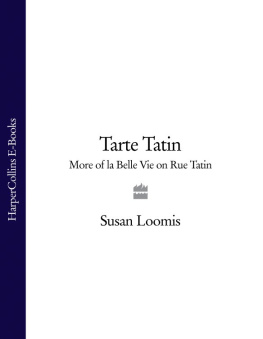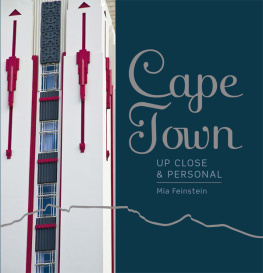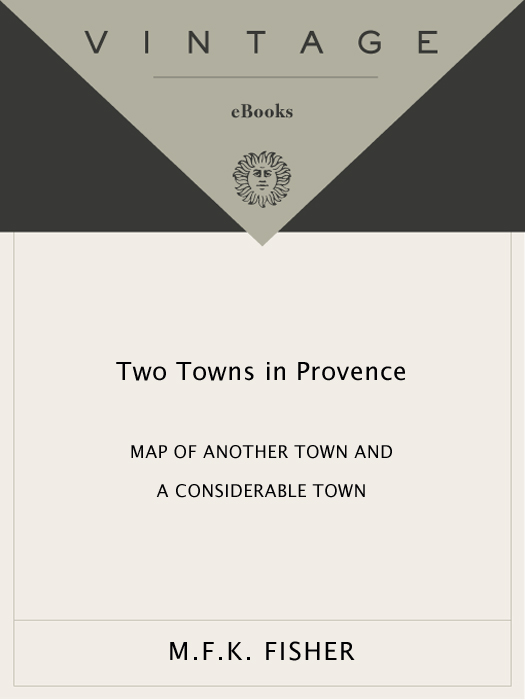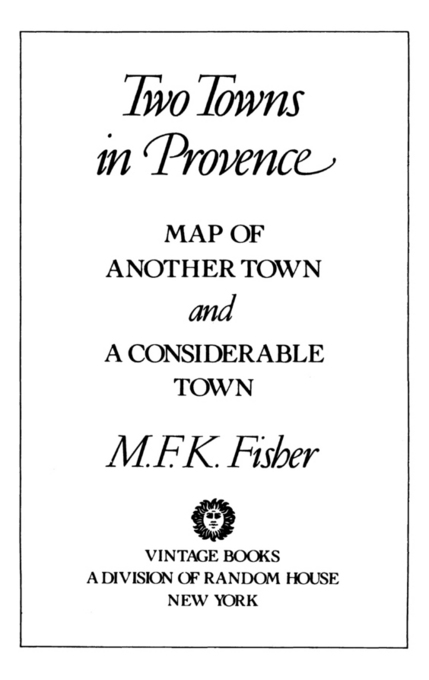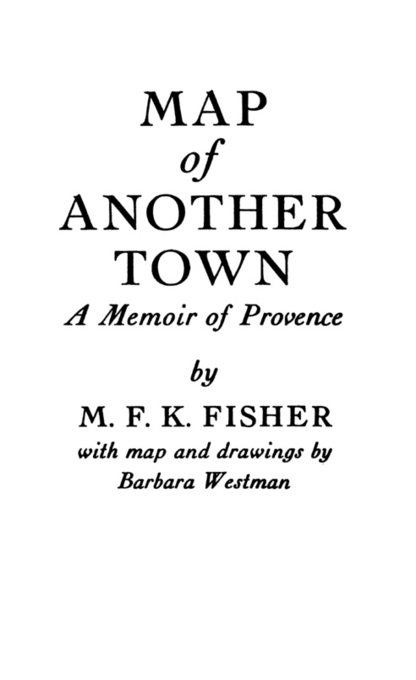DC 801. A 325 F 525 1983 944.91 83-6901
eISBN: 978-0-307-80648-2
it is very probable that if I had
to draw the portrait of Paris, I would,
one more time, draw it of myself.
J EAN G IONO , 1961
O FTEN in the sketch for a portrait, the invisible lines that bridge one stroke of the pencil or brush to another are what really make it live. This is probably true in a word picture too. The myriad undrawn unwritten lines are the ones that hold together what the painter and the writer have tried to set down, their own visions of a thing: a town, one town, this town.
Not everything can be told, nor need it be, just as the artist himself need not and indeed cannot reveal every outline of his vision.
There before us is what one human being has seen of something many others have viewed differently, and the lines held back are perhaps the ones most vital to the whole.
Here before me now is my picture, my map, of a place and therefore of myself, and much that can never be said adds to its reality for me, just as much of its reality is based on my own shadows, my inventions.
Over the years I have taught myself, and have been taught, to be a stranger. A stranger usually has the normal five senses, perhaps especially so, ready to protect and nourish him.
Then there are the extra senses that function only in subconsciousness. These are perhaps a strangers best allies, the ones that stay on and grow stronger as time passes and immediacy dwindles.
It is with the invisible ink distilled from all these senses, then, that I have drawn this map of a town, a place real in stone and water, and in the spirit, which may also be realer.
Aix-en-Provence
177 meters above sea level; 52,217 inhabitants; former capital of Provence; seat of an archbishopric since the fifth century, and of the departmental law courts and prison, and the schools of Law and Letters of the University of Aix-Marseille; one of the most beautiful art centers of Europe.
The town was founded in 123 B.C. by the Roman consul Sextius Calvinus, and was made into a prosperous colony by Julius Caesar. Between the fifth and twelfth centuries it lost much of its political importance to the town of Arles, although it was once more made the capital in the twelfth century under the Counts of Provence.
During the fifteenth century, before joining France, it became the hub of European culture under the benevolent administration of King Ren and his two queens.
Le Guide Bleu: France, 1960
S O HERE IS the town, founded more than two thousand years ago by the brash Roman invaders, on much older ruins which still stick up their stones and artifacts. I was as brash a newcomer to it, and yet when I first felt the rhythm of its streets and smelled its ancient smells, and listened at night to the music of its many fountains, I said, Of course, for I was once more in my own place, an invader of what was already mine.
Depending upon ones vocabulary, it is facile enough to speak of karma or atavism or even extrasensory memory. For me, there was no need to draw on this well of casual semantics, to recognize Aix from my own invisible map of it. I already knew where I was.
I had been conditioned to this acceptance by a stay in another old town on the northward Roman road, when I was younger and perhaps more vulnerable. I lived for some time in Dijon in my twenties, and compulsively I return to it when I can, never with real gratification. And I dream occasionally of it, and while the dream-streets are not quite the same as in waking life (the Rue de la Libert swings to the right toward the railroad yards instead of going fairly straight to the Place dArmes and the Ducal Palace, for instance, but I always know exactly where I am going), still I am a remote but easy visitor, happier as such than as a visible one.
I do not, in my imagination, feel as easy there as in Aix. I have long since made my own map of Dijon, and it is intrinsic to my being, but the one of Aix is better, a refuge from any sounds but its own, a harbor from any streets but its own: great upheavals and riots and pillages and invasions and liberations and all the ageless turmoil of an old place.
I feel somewhat like a cobweb there. I do not bother anyone. I do not even wisp myself across a face, or catch in the hair of a passerby, because I have been there before, and will be again, on my own map.
I can walk the same streets, and make my own history from them, as I once did in a lesser but still structural way in Dijon, my first return to the past, forever present to me.
The town was put on its feet by a Roman whose elegant bathing place still splutters out waters, tepid to hot and slightly stinking, for a ceaseless genteel flow of ancient countesses and their consorts and a quiet dogged procession of arthritic postal clerks and Swiss bankers and English spinsters suffering from indefinable malaises usually attributed to either their native climates or their equally native diets. This spa, more ancient than anyone who could possibly stay in it except perhaps I myself, is at the edge of the Old Town, at the head of the Cours Sextius, and more than one good writer has generated his own acid to etch its strange watery attraction.
Countless poems have been written too, in wine rather than acid, and countless pictures have been painted, about the healing waters and the ever-flowing fountains of the place. They will continue as long as does man, and the delicate iron balconies will cling to the rose-yellow walls, and if anyone else, from 200 B.C. to now, ever marked the same places on the map, in acid or wine or even tears, his reasons would not be mine. That is why Aix is what it is.


